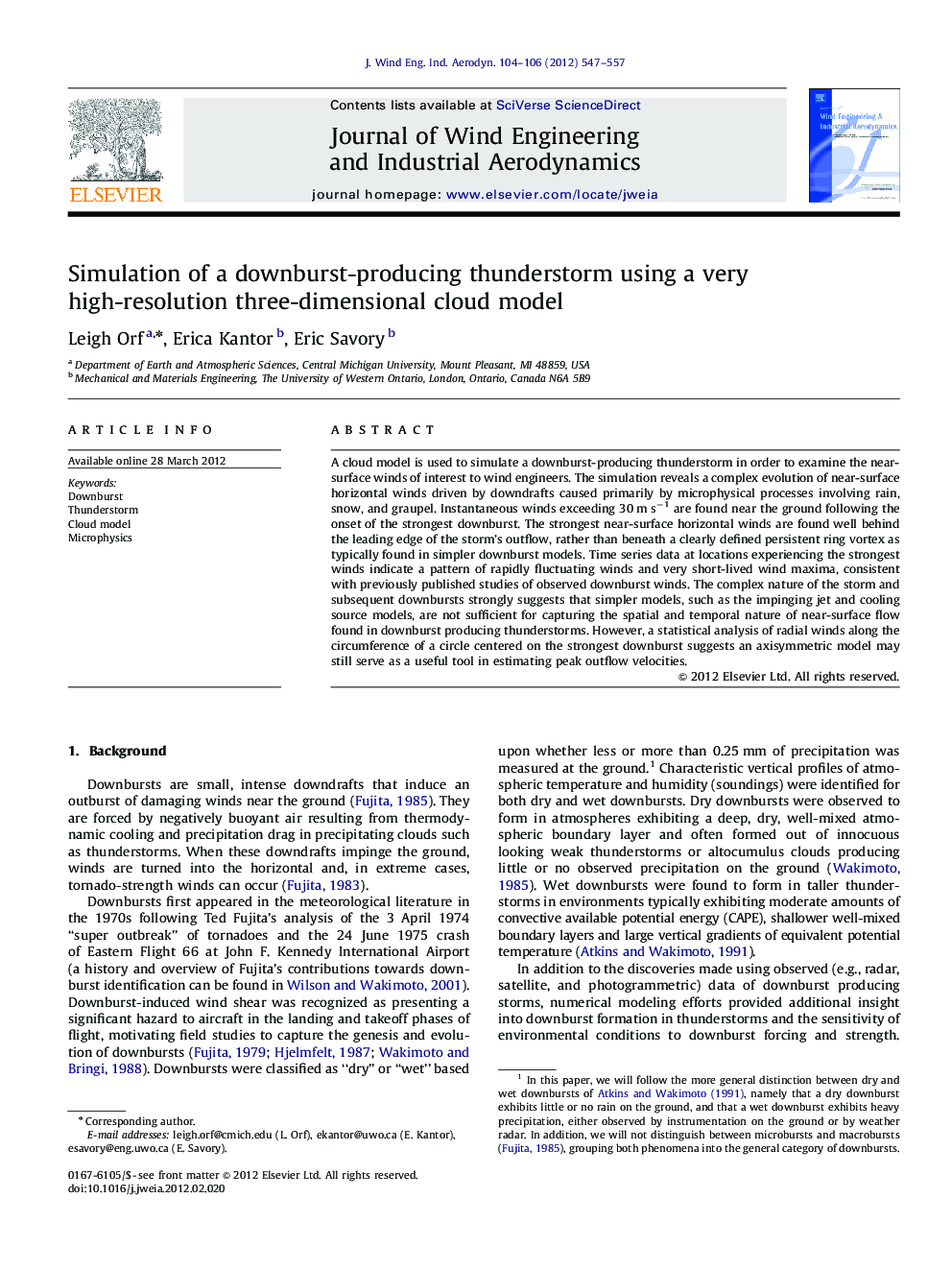| Article ID | Journal | Published Year | Pages | File Type |
|---|---|---|---|---|
| 293679 | Journal of Wind Engineering and Industrial Aerodynamics | 2012 | 11 Pages |
A cloud model is used to simulate a downburst-producing thunderstorm in order to examine the near-surface winds of interest to wind engineers. The simulation reveals a complex evolution of near-surface horizontal winds driven by downdrafts caused primarily by microphysical processes involving rain, snow, and graupel. Instantaneous winds exceeding 30 m s−1 are found near the ground following the onset of the strongest downburst. The strongest near-surface horizontal winds are found well behind the leading edge of the storm's outflow, rather than beneath a clearly defined persistent ring vortex as typically found in simpler downburst models. Time series data at locations experiencing the strongest winds indicate a pattern of rapidly fluctuating winds and very short-lived wind maxima, consistent with previously published studies of observed downburst winds. The complex nature of the storm and subsequent downbursts strongly suggests that simpler models, such as the impinging jet and cooling source models, are not sufficient for capturing the spatial and temporal nature of near-surface flow found in downburst producing thunderstorms. However, a statistical analysis of radial winds along the circumference of a circle centered on the strongest downburst suggests an axisymmetric model may still serve as a useful tool in estimating peak outflow velocities.
► Downburst-producing thunderstorms are simulated using a high resolution cloud model. ► Resultant downbursts evolve in a complex, asymmetric manner. ► Surface winds exceeding 37 m s−1 are found near the ground.
